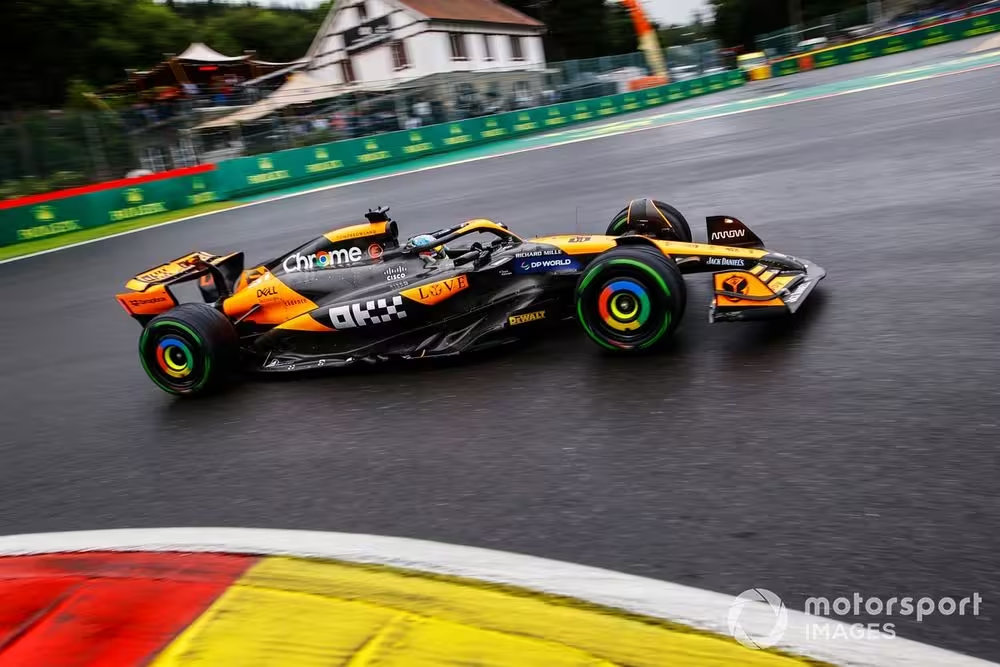McLaren is set to “cash in” on its Formula 1 aerodynamic testing over the first part of the season, after bringing relatively few upgrades in the opening 14 races.
The aerodynamic testing regulations (ATR) in contemporary F1 restricts how much wind tunnel time and computational fluid dynamics (CFD) resources can be used, with each team receiving limits. These are allocated depending on their constructors’ championship position in 2023 for the first half of the year, and then changed to fit the 2024 placings after 30 June.
McLaren launched a major upgrade in Miami, but since has introduced only circuit-specific and minor updates in the following races.
This suggests that the team has been holding fire on its developments to introduce them after the summer break, giving it an ATR advantage for the second half of the year versus other teams who took updates to races with a more consistent cadence.
As the upgrades planned for the second half of the year were largely conceived in the first half of the year, this gives McLaren more time not only to finalise its 2024 upgrade schedule, but also to spend on its 2025 car.
Aside from the higher-downforce rear wings that the team developed for Imola and Monaco, and the lower-downforce wings for Silverstone and Spa, the only longer-term upgrade detailed after Miami was a new front wing.
“Effectively, Red Bull have taken trackside more developments so far, in terms of physical parts delivered, when you look at the submission, than what we have done,” said team principal Andrea Stella.
“But definitely, I can talk for McLaren. We seem to be now in condition to cash in some of this development that we have accrued in the ground.
“I would expect that for the second part of the season, we will have at multiple times some new parts.”
Oscar Piastri, McLaren MCL38
Photo by: Andy Hone / Motorsport Images
As it was third in the championship at the end of the Austrian Grand Prix – the same date as the 30 June cut-off before the ATR allocation was changed, McLaren has 256 wind tunnel runs to use in each of the two-month aerodynamic testing periods (ATP), 64 hours of wind tunnel airspeed above 15m/s, 320 hours of wind tunnel occupancy time, and 1600 new geometries to use in CFD simulations. There are three ATPs affected by this change until the end of the year.
This was a reduction compared to the first half of the year, when McLaren had more of each to use owing to finishing…
Click Here to Read the Full Original Article at Autosport.com – Formula 1 – Stories…

